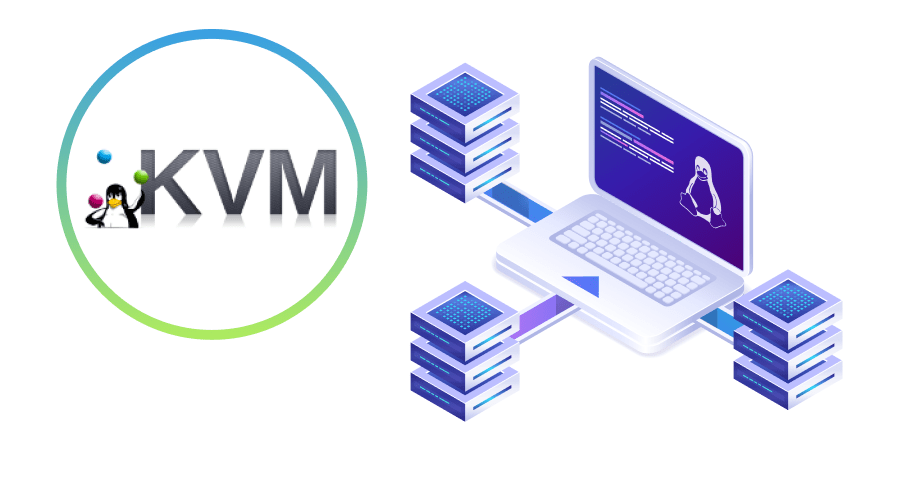
KVM (Kernel-based Virtual Machine) is an open-source virtualization technology that allows users to run multiple virtual machines on a single physical server. It is a full virtualization solution that provides hardware virtualization capabilities by leveraging the Linux kernel. KVM has gained popularity due to its high performance, scalability, and extensive feature set. In this article, we will explore the various features of KVM Virtual Server and how they contribute to its efficiency and flexibility.
High Performance and Scalability of KVM
KVM Virtual Server offers exceptional performance and scalability. It leverages hardware virtualization extensions such as Intel VT or AMD-V to allow direct access to the host server’s hardware resources. This enables KVM to achieve near-native performance for virtual machines, making it suitable for demanding workloads. Additionally, KVM can efficiently utilize the available resources, allowing for optimal performance even under heavy load conditions.

What are the Features of KVM Virtual Server
Operating System Flexibility with KVM
One of the key advantages of KVM is its ability to run multiple operating systems simultaneously. KVM supports a wide range of operating systems, including various Linux distributions, Windows, BSD, and more. This flexibility allows businesses to choose the most suitable operating system for each virtual machine, providing a diverse environment to meet different requirements.
Robust Security Measures in KVM
KVM Virtual Server incorporates robust security measures to ensure the integrity and isolation of virtual machines. It utilizes the security features provided by the Linux kernel, such as SELinux and AppArmor, to enforce strict access controls and prevent unauthorized access. Additionally, KVM employs virtualization-specific security technologies like sVirt, which isolates and protects individual virtual machines from each other and the host system.
Efficient Resource Management in KVM
KVM offers efficient resource management capabilities, allowing users to allocate and manage system resources effectively. It provides granular control over CPU, memory, and disk resources, enabling administrators to optimize resource allocation based on workload requirements. KVM also supports dynamic resource allocation, allowing resources to be dynamically adjusted based on workload demands, ensuring efficient resource utilization.
Live Migration Capabilities of KVM
KVM Virtual Server supports live migration, enabling seamless movement of virtual machines between physical hosts without any noticeable downtime. Live migration allows for workload balancing, hardware maintenance, and disaster recovery. This feature ensures high availability and uninterrupted service by transferring the running state of a virtual machine to another physical server without disruption.
Snapshot and Cloning Features in KVM
KVM provides snapshot and cloning features, allowing users to capture the entire state of a virtual machine at a specific point in time. Snapshots serve as a backup mechanism, enabling easy restoration of virtual machines to a previous state if needed. Cloning allows for the rapid deployment of multiple identical virtual machines, reducing the setup time and effort required for creating new instances.

Snapshot and Cloning Features in KVM
High Availability and Redundancy with KVM
KVM Virtual Server supports high availability and redundancy through features such as server clustering and failover. By combining multiple physical hosts into a cluster, KVM ensures that virtual machines can seamlessly migrate to an available host in case of hardware failure or maintenance. This redundancy ensures minimal downtime and improves the overall reliability of the virtual environment.
Enhanced Networking Capabilities in KVM
KVM offers enhanced networking capabilities, allowing users to create complex network topologies and implement advanced networking features. It supports various networking models, including bridged networking, NAT, and VLANs, providing flexibility in configuring network connectivity for virtual machines. KVM also supports advanced networking protocols such as VXLAN and SR-IOV, enabling efficient network virtualization and high-performance networking.
Backup and Restore Functionality in KVM
KVM Virtual Server provides backup and restore functionality, allowing users to create backups of virtual machines and easily restore them if necessary. Backup solutions can be implemented at the host level or within the virtual machines themselves. By regularly performing backups, businesses can protect their critical data and ensure business continuity in case of data loss or system failures.
Easy Administration and Management in KVM
KVM offers a user-friendly interface and a range of management tools that simplify the administration and management of virtual machines. Tools like libvirt and Virt-manager provide a graphical user interface for managing virtual machines, while command-line utilities offer advanced control and automation options. KVM’s management capabilities streamline the deployment, monitoring, and maintenance of virtual machines, making it accessible to both novice and experienced administrators.
Cost-Effective Virtualization with KVM
KVM Virtual Server is a cost-effective virtualization solution as it is based on open-source technologies. By utilizing the Linux kernel and open-source hypervisor, businesses can avoid costly licensing fees associated with proprietary virtualization platforms. KVM’s efficient resource utilization also contributes to cost savings by maximizing the utilization of existing hardware. The combination of performance, flexibility, and cost-effectiveness makes KVM an attractive option for businesses of all sizes.

Cost-Effective Virtualization with KVM
Conclusion
KVM Virtual Server is a powerful and feature-rich virtualization solution that offers high performance, flexibility, and security. With its ability to run multiple operating systems, robust security measures, efficient resource management, and support for advanced features such as live migration and snapshots, KVM provides businesses with a reliable and cost-effective virtualization platform. Whether it’s for consolidating servers, deploying cloud infrastructure, or running mission-critical applications, KVM Virtual Server proves to be a valuable tool in meeting the diverse needs of today’s businesses.
KVM VPS hosting services provided by Worldbus.ge. KVM stands for Kernel-Based Virtual Machine and is a popular virtualization technology that allows multiple virtual servers to run on a single physical server. Worldbus.ge’s KVM VPS hosting plans offer a variety of features, including:
- Up to 4 vCPUs
- 6 GB of RAM
- 150 GB of SSD memory
- 1 terabyte of bandwidth
- SolusVM control panel
- 24/7 support
- price: 39.99$
Prices for Worldbus.ge KVM VPS hosting plans start at €14.99 per month. You can choose the plan that best suits your needs and budget.
